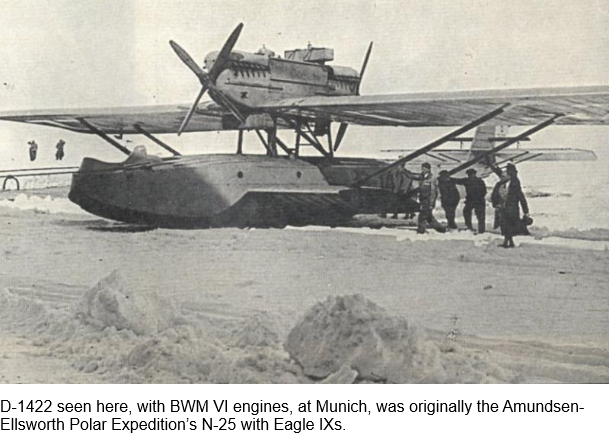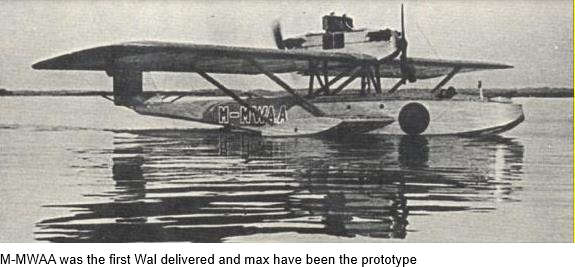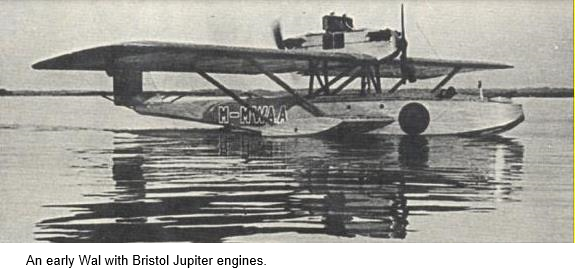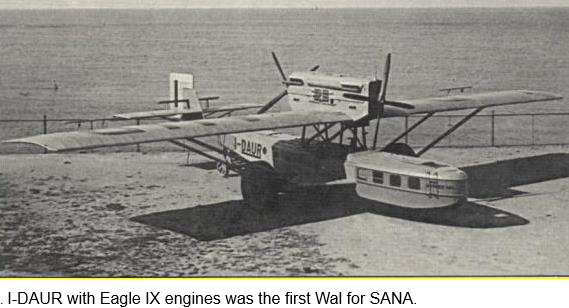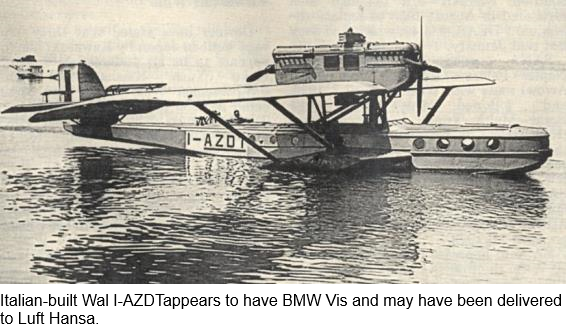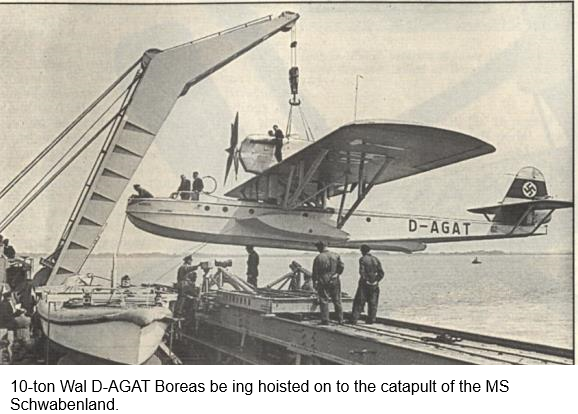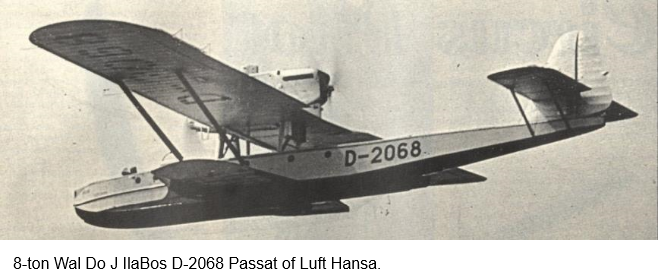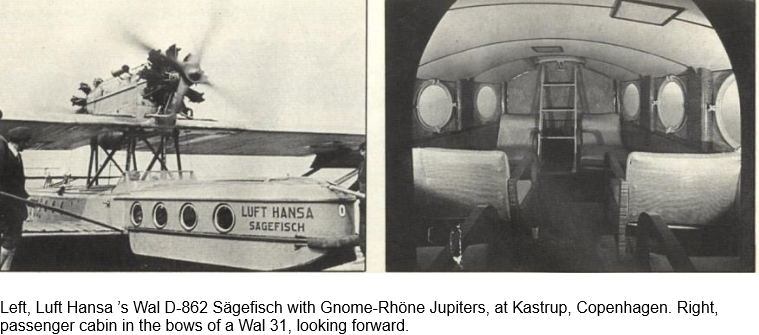
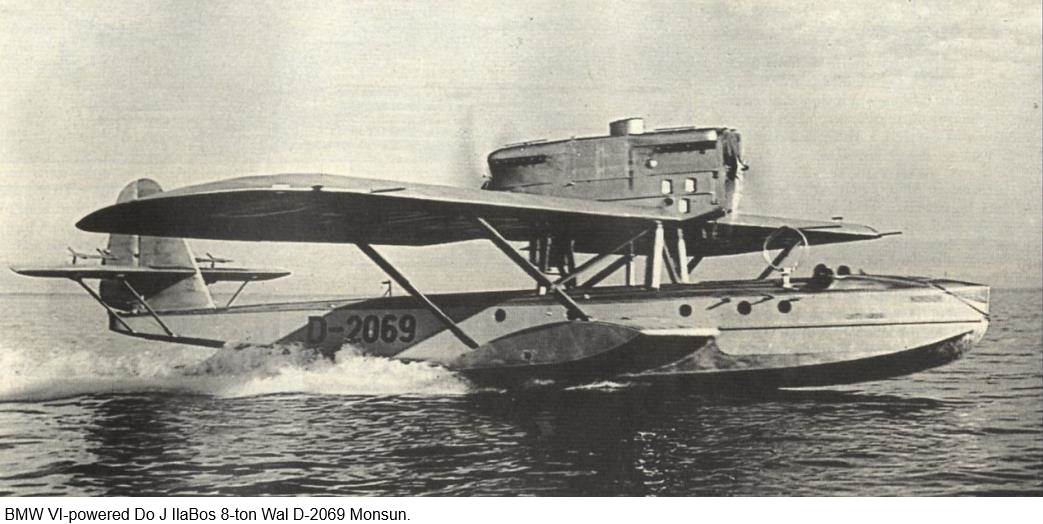
The name Dornier will long be associated with metal flying-boats but it is doubtful whether many people know that the first of the line was designed as early as 1914. In his early twenties Dipl Ing Claudius Dornier was working for a number of metal construction companies, but in 1910, at the age of ‘26, he joined Luftschiffbau Zeppelin; and in 1914, when Zeppelin-Werke Lindau GmbH was set up for the construction of metal flying-boats, Dornier was put in charge. In 1922 the company was renamed Dornier-Metallbauten GmbH.
Domier’s first flying-boat design was the massive 142ft 9in-span, 23,0001b Rs I, a metal biplane with three engines and fabric-covered flying surfaces. Unfortunately the Rs I was destroyed in a storm and never flew, but Dornier went on to design a whole range of large unorthodox flying-boats, employing steel and duralumin construction and introducing features which were to become a Dornier signature in the post-war era—such as broad-beam inherently-stable hulls and sponsons, or sea-wings (Stummel). Strangely, several of the Dornier flying- boat designs were in three tiers—a short hull with or without sponsons; a braced wing mounted high above the hull and carrying a long fuselage, to which the tail surfaces were attached; and, between the wing and hull, the engines in tandem pairs.
The last of these 'boats was the Rs IV; it was not completed before the Armistice and Dornier partly converted it into a 20-passenger civil aircraft, but it had to be scrapped in 1919 to comply with the Allied Treaty restrictions. Ä four-engined project of March 1918 had an orthodox hull and parasol wing which carried the engines, and in many respects it set the pattern for the Wal, although it would have been nearly double the size. The design and development of these large metal flying-boats is a fascinating story and readers would be well advised to get hold of a copy of The German giants by G. W. Haddow and Peter M. Grosz (Putnam, 1962), for this book covers the wartime Dornier 'boats in considerable detail.
Under construction when the war ended was the Gs I. The design was modified to become a commercial flying-boat, and in January 1919 the components were taken from the Lindau factory to Seemoos where the aircraft was completed and first flown on July 31, 1919. The Gs I was a metal-structured aircraft with broad but shallow hull, low-aspect-ratio untapered wing mounted high above the hull on a network of struts and strut-braced to the sponsons, biplane tail with twin fins and rudders, and wing-mounted tandem 260 h.p. Maybach Mb IVa water-cooled engines each driving a two-bladed wooden propeller. A humped structure above the forward hull housed the six-passenger cabin, in each side of which were four windows. At the front of this super- structure was an open cockpit for the pilot. The wing had slight anhedral and the ailerons were balanced by small aero-foils mounted above their leading edges. The upper tailplane overhung the vertical surfaces and carried a one-piece elevator. There was no lower elevator.
The Gs I underwent service trials in Switzerland in 1920 with Ad Astra-Aero and was registered CH 8. The trials were successful and upon completion the Gs I set out for demonstrations at Amsterdam and Stockholm. But before the flying-boat could reach Sweden the Allies insisted on its destruction, and it was sunk off Kiel on April 25, 1920. Two nine-passenger Gs Ils were never completed because of the Allied restrictions on German aircraft manufacture. Dornier did design and build the much smaller Do C and Do L Delphin flying- boats, the first flying on November 24, 1920, but Dornier had to arrange foreign- sited production of its most successful boat, the Wal, which at some time became the Do J.
Because production of the Wal would not have been allowed in Germany, Construzioni Meccaniche Aeronautiche SA (CMASA) was founded at Marina di Pisa in Italy to build Dornier aircraft, and it seems that the prototype Wal was built there or assembled there from components manufactured in Germany. The Wal first flew on November 6, 1922. This example was almost certainly the bearer of c/n 1 and went to Spain as M-MWAA, arriving in Barcelona in April 1923 as the first of a batch of 16 military Wals, W.l-16, which were registered
M-MWAA to M-MWAP. The original Spanish order was for six examples powered by 300 h.p. Hispano-Suiza engines. W.12 M-MWAL Plus Ultra with Napier Lions flew 6,259 miles from Spain to Buenos Aires in 59hr 35min in January—February 1926. W.16 M-MWAP Numancia was the one involved in the Atlantic drama when its crew was rescued by the British aircraft carrier HMS Eagle (see Dornier on deck, October 1985 Aeroplane) and the prototype, named Valencia, made a Melilla—Fernando Po return fiight in winter 1926-27. W’.14 M-MWAN was powered by Gnome-Rhöne Jupiters. Before getting bogged down among individual Wals, only too easy to do, the Wal must be described. That is not easy, except to state that it was an all-metal flyingboat with sponsons, strut-braced parasol wing, single fin and rudder, and tandem engines mounted on the centreline of the upper surface of the wing. The appearance of the early Wals was quite primitive, almost crude, but the type underwent so many stages of development that the late examples could be described as elegant. Most Wals were military aircraft or civil airliners, but there were two batches of mail carriers and some specialized examples for particular flights. Here it is necessary to concentrate on the passenger and mail versions.
No completely detailed and accurate record of the Wals is now possible. There were at least three, and possibly four, different wings with the first examples having a span of 22-5m (73ft lOin), later versions 23-2m or 23-3m (76ft 11 in) and the final version 27-2m (89ft 2jin). Wing area increased from 96mJ (1,033 •3ft2) to
112nr (1,205-5ft2), and all-up weights rose from about 4,000kg (8,8181b) to 10,000kg (22,0461b)—the 10-ton Wal. Known engines were: 300 h.p. Hispano- Suiza; 360 h.p. Rolls-Royce Eagle IX; 185 h.p. BMW III; 600/690 h.p. BMW VI; 600/670 h.p. BMW Vila; 500 h.p. Farman 12We; 500/525 h.p. Fiat A.22R; 750 h.p. Fiat A.24R; 510 h.p. Isotta-Fraschini Asso 500; 600 h.p. Hispano-Suiza 12Lb; 400 h.p. Liberty; 450 h.p. Lorraine-Dietrich 12Ed; 600 h.p. Lorraine-Courlis 12Fb; 260 h.p. Maybach; 450 h.p. Napier Lion; 560/600 h.p. Siemens Sh 20, and a range of Jupiter engines built by Bristol, Gnome-Rhöne and Piaggio. The Aeroplane Spotter in
October 1943 reported three versions with Rolls-Royce Kestrel Illa engines and one with Rolls-Royce Condors but I would want some positive proof before accepting these statements. I am also inclined to mistrust the reported BMW IIIs which would have produced a very underpowered aeroplane.
The wing, with parallel chord, was a two-spar structure of steel and duralumin and was fabric covered except for the area within the propeller slipstream. The ailerons were balanced by auxiliary aerofoils as on the Gs I. In the early Wals the wingtips were square but later the tips were rounded. Most of the early wings were without dihedral but later German- built Wals had slight dihedral. The wing was carried aboved the hull on two sets of N struts and braced to each sponson by parallel struts.
The duralumin and steel hull, divided into numerous watertight compartments, had a marked V bottom at the bows but was almost flat at the main step. The
second step ended in a knife-edge to which the water rudder was attached. There were numerous external stiffeners on the top surface, and stiffeners were used on the hull sides (in different areas on different models). The sponsons were also divided into several watertight compartments andthey too had stiffeners on their upper surfaces. All except the 10-ton, and modified 8-ton, Wals had open cockpits and the interiör arrangements varied widely. In the passenger Wals there were fore and aft cabins and the seating ranged from six to 14. The Luft Hansa passenger Wals had ten seats, SANA’s ranged from eight to 14, and most of Aero Espresso’s Wals had 11 seats. Some of the forward cabins had almost square Windows; others had circular portholes, as did the rear cabins.
The tailplane was strut braced to the hull, was untapered and square-tipped. The elevator was balanced by auxiliary surfaces. On early aeroplanes there was a small vertical fin and horn-balanced rudder. This was soon changed and a full-height fin fitted. Eventually the tail surfaces were redesigned and gave a more modern and pleasing appearance. The tail structure was of metal although the movable surfaces and possibly the tail- plane appear to have been fabric covered. On some Wals the fins had corrugated metal skins with stiffeners. Wals used two- and four-bladed wooden and three-bladed metal propellers. There are conflicting reports of the numbers of Wals built. The type was built by CMASA at Marina di Pisa and from the 81st airframe final assembly was by Piaggio at Finale Ligure; CASA at Cadiz in Spain built Wals and Super Wals; Aviolanda produced military Wals in the Netherlands; Kawasaki built some; Dornier built Wals at Manzell/ Friedrichshafen; and Aero-Metall AG (Dornier) built some at Altenrhein in Switzerland.
Dornier production figures in my possession are: Marina di Pisa 103, Finale Ligure 14, CASA 26, Aviolanda 46, Kawasaki 3, and Dornier Manzell 40,
giving a total of 232. It is believed that total production was nearer 300. Other sources have quoted 129 and “about 150” Italian-built Wals, the CASA figure seems to be 49, the Aviolanda figure of 46 seems to be correct, but the Manzell and Altenrhein production cannot be checked.
Another complication is that type designation suffixes can only be found for, and may have only existed for, German and Swiss-built examples. To further confuse the Wal story, in 1933 CMASA changed its name to Marina-Fiat and designated its last Wal variant MF.5.
It is impossible to determine when the Wal first went into airline service. There were at least nine airlines which under- took operations with Wals and it seems hat SCADTA in Colombia and Deutscher Aero Lloyd were the first to employ them on regular services. In May 1924 Condor Syndikat was founded in Germany and acquired two Italian-built Wals for route surveys in Central America; they were Atlantico, c/n 34, and Pacifico, possibly c/n 35. These were Eagle-powered and built in 1925. After some survey work Atlantico was leased to SCADTA in 1925 and registered A19. It was returned to Germany, became D-1012, and then in 1927 want to Varig in Brazil as P-BAAA (later PP-CAA). SCADTA also leased Pacifico, which had originally been registered I-DOOR, and used it as A20. It crashed near Parguanå Peninsula in Venezuela in 1926. SCADTA acquired its own Wal, C28, in 1928 and this passed to the Colombian Government in 1932.
European routes
In 1925 Deutscher Aero Lloyd bought four Eagle IX powered Wals—D-861-864, c/ns 41-44—and they are believed to have worked services between Danzig and Stockholm. In 1926 they passed to Luft Hansa and were named, respectively, Hai, Sägefisch, Thunfisch and Hecht. From May 3, 1926, the Wals worked the Stettin—Kalmar—Stockholm sector of the Berlin—Stockholm route. They also worked other Baltic services including Stettin—Copen hagen—Got henburg— Oslo and Travemiinde—Copenhagen. The DLH Wals had a loaded weight of 6,300kg (13,8901b), and Sägefisch and Hecht are known to have been re-engined with Gnome-Rhone Jupiters.
One of the main users of civil Wals was SANA (SA Navigazione Aerea) which had
at least 16. Four were registered in July 1926 as I-DAUR, I-DAER, I-DEAR and I-DOAR, c/ns 47-50. They had Eagle IX engines and accommodation for 9/11 passengers. The first weighed 5,600kg (12,3451b) and the third and fourth had an all-up weight of 6,300kg. Another Eagle-powered Wal, I-DAOK c/n 58, was registered to SANA in January 1927. I-DAUR and I-DAOK are known to have been re-engined with Piaggio Jupiter IVs. The airline subsequently acquired at least nine Jupiter-powered Wals—I-AYZY, I-AYZZ, I-AZDI, I-AZDL, I-AZDZ, I-AZEA, I-AZEB, I-AZEC and I-AZED, c/ns 68, 70, 101, 102, 111-114 and 126. I-CITO, c/n 146, with Fiat A.22R engines was registered to SANA in May 1932, and two Fiat A.24R powered MF.5s, I-AZEF and I-AZER (c/ns 255-6), are believed to have been acquired by SANA in 1931. These could carry up to 14 passengers and the all up weight was 7,400kg (16,314 lb). In addition, I-DEAR2 c/n 144 had been registered in August 1930 to replace the original I-DEAR, c/n 49, which had been lost that January. SANA opened its Genoa—Rome— Naples—Palermo La Freccia Verde (Green Arrow) route with Wals on April 7, 1926,and followed this with the Rome—Malta—Tripoli La Freccia Rossa (Red Arrow) on November 1, 1928, and the Rome—Genoa—Marseilles—Barcelona La Freccia Azzurra (Blue Arrow) a few days later—I-DAER flying the first SANA service. The Wals were also probably used on the Genoa—Rome—Naples— Athens—Alexandria services which began on April 11, 1929. SA Aero Espresso Italiana had at least 10 Wals, the first five being registered in 1927. These carried 8/11 passengers and are believed to have been delivered with Isotta-Fraschini Asso 500 engines although at one period at least one is known to have had Fiat A.22Rs. The Aero Espresso Wals were I-AZAA, I-AZDA-DC, I-AZDG, I-AZDM-DO, I-AZEE and I-AZEG, c/ns 72, 73, 79, 80, 84, 103, 104, 125, 147 and 149. They were used on the Brindisi—Athens—Istanbul route, probably replacing or supplementing Savoia Marchetti S.55s from sometime in 1927.
Varig introduced Atlantico into regular service on the Rio Grande—Pelotas— Porto Alegre route on February 22, 1927, having operated a flight over the route on February 3. In 1930 this Wal was transferred to Syndicato Condor which had opened a Rio de Janeiro—Porto Alegre service on November 9, 1927, using the BMW Vl-powered Wals P-BACA Santos Dumont and P-BADA Bartholomeu de Gusmåo. These were supplied by Luft Hansa and were c/n 83 ex-D-1213 and I-AZDE and c/n 82 ex-D-1196 and I-AZDF. Both were lost during 1928, during which year the airline receivedthree more BMW-powered Wals, P-BAIA Guanabara (ex-D-1443 Lubeck), P-BALA Olinda (ex-D-1488 Hamburg) and P-BAMA Jangadeiro (ex-D-1626 Flensburg), c/ns 106-108. P-BAIA was later registered PP-CAI, and P-BAMA was returned to Germany in 1931, later becoming D-ARIP.
Kawasaki Wals
Dornier have stated that three Wals were built in Japan by Kawasaki but this appears to be an underestimate. Nihon Koku Yuso Kaisha had three 6/8-passenger Wals which were certificated in 1930 as J-BARH, J-BCCO and J-BCDO, c/ns 7-9. They had BMW engines, and there is evidence for two more Japanese Wals, J-BAAE and J-COGI.
In Spain LAPE had three CASA-built Napier Lion-powered Wals. These were EC-AAZ, EC-YYX and EC-YYY, built in 1934, and used on services to the Balearic Islands.
Early in 1930 Syndicato Condor began experimental mail transfers from Wals to ocean-going liners at Farnando de Noronha, and Luft Hansa was also using Wals on survey flights as far as the Canary Islands in attempts to speed up South Atlantic mails. The DLH Wals were the BMW Vl-powered D-1397, c/n 105, and the BMW VID-powered D-1647 and D-1648, c/ns 109 and 110. D-1397 had been named Liibeck, later Kiel, and the other two were Bremerhaven and Helgoland. These names presumably applied when they were operating German Coastal services.
The work for which the Wal will be best remembered is probablv the pioneering of South Atlantic mail services. In 1930 Dornier began building Wals at Friedrichshafen and on January 27, 1931, flew the first Do J II 8-ton Wal which could be powered by BMW water-cooled or Siemens Sh 20 air-cooled engines. Luft Hansa had three 8-ton Wals, D-2068 Passat, D-2069 Monsun (later D-ABIR) and D-2399 Taifun (later D-AKER), c/ns 185, 210 and 237, and these undertook experimental South Atlantic crossings from June 1933. Monsun made the first Crossing from Bathurst to Natal. The Wals were catapulted from depot ships and, to get the advantage of ground effect, flew at only 15-30ft above the ocean.
From February 1934 the Wals operated a regular scheduled service, with landplanes carrying the mail from Berlin to Bathurst. The depot ship Schwabenland was stationed at Bathurst and the Wals refuelled en route from the Westfalen.Later the Ostmark replaced the Schwabenland. Taifun flew the first of the regular services over the ocean on February 7-8 but the route soon became the responsibility of the 10-ton Wal 33s, which had first flown on May 5, 1933. Apart from its greater weight and enclosed pilots’ cockpit the 10-ton Wal resembled the 8-ton model.
The Lufthansa (it was one word bythen) 10-ton Wals were built in 1934 and were: D-AFAR Samum, D-AGAT Boreas, D-ADYS Tornado, D-ALOX Passat and D-AKYM Mistral, c/ns 297-300 and 676.
By the time war brought the service to an end the Wals had made 328 South Atlantic crossings, Tornado being lost at sea on February 16, 1936.
The Aviolanda-built Wals were all for the Royal Netherlands Navy and used in the Netherlands East Indies (now Indonesia). The Luftwaffe also adopted the Wal; this was the Militär-Wal 33 based on the 8-ton Wal. About 30 were built and they operated under the designation Do 15.
There is insufficient space to detail the Wal’s many long-distance flights but mention must be made of the Amundsen-Ellsworth Polar Expedition of 1925. Two Italian-built Eagle-powered Wals, N-24 and N-25 (c/n 37), were used in an attempt to fly to the North Pole. They managed to get to 87° 43'N where N-24 had to be abandoned, but the whole expedition flew off the ice in N-25 and returned to Norway. Later N-25 was fitted with Napier Lions, registered G-EBQO and used by F. T. Courtney for an attempted Atlantic flight, after which it went to Germany as D-1422 Amundsen Wal, a Do J Bas with BMW VI engines. It was finally flown to a Munich airport where it landed on snow, was put on view
outside the Deutsches Museum and destroyed in 1944 in an Allied air raid.
